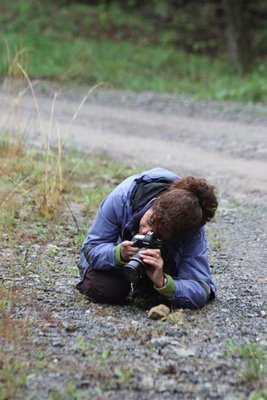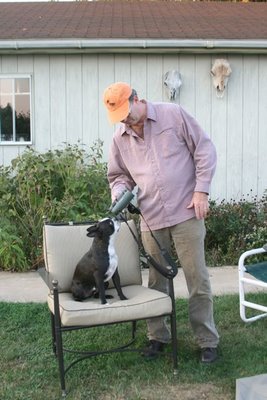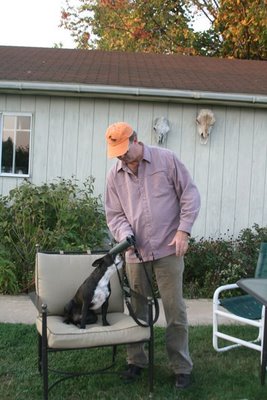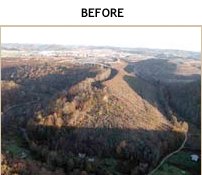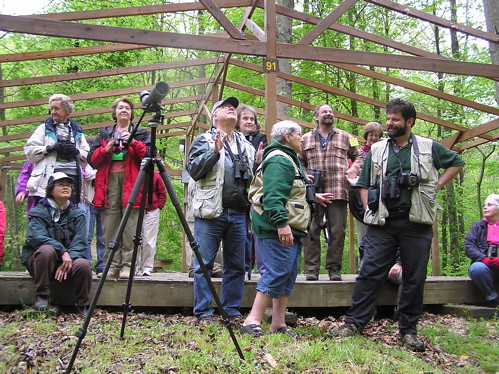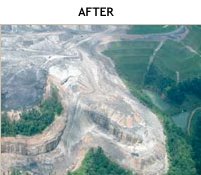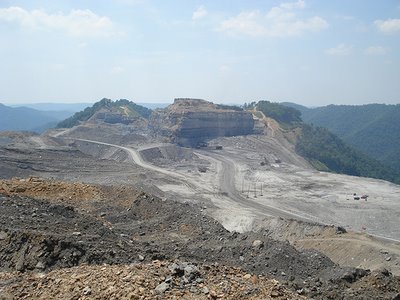
A mountain that's been mined from below still looks and acts like a mountain. A mountain that's been removed is never a mountain again.
Gentle readers, I've been absorbed lately by something that is happening in West Virginia, and all over Appalachia. Over the 2 1/2 years I've been blogging, I've tried to keep it light and entertaining. But keeping a blog is like living a life--it gets hairy sometimes, and to try to pretend otherwise, to keep the shiny happy veneer polished, feels like hypocrisy to me. I hope you'll stay with me for the next few posts.
Going to the
New River Birding and Nature Festival in Fayetteville, WV, always feels like coming home to us. For one thing, the Zickefooses find their center of abundance around Buckhannon, WV. For another, Bill, Phoebe, Liam, Chet and I have built good friendships with the festival organizers over the six years we've been working at the festival, and we believe in their mission. They've raised a potload of money over the years for nature education in local schools. I can't overestimate the importance of bringing the next generations along with a better understanding and appreciation of the natural resources all around them.
Educating her children, starting an uprising from within, is going to be the only way to save West Virginia from the gigantic coal companies who are blowing her mountains up, dumping the tailings in streams, and stripping the land of its coal. For if West Virginians can't see the value of leaving their landscape intact and functioning; if a mountain is worth something to them only when it's torn down and turned inside out, then there will be nothing to stop Big Coal, the Army Corps of Engineers, and West Virginia's own "Department of Environmental Protection" from linking arms to tear the last mountain down. West Virginia's DEP routinely grants variances for coal companies wishing to remove mountaintops, looks the other way when streams are buried and valleys are filled with the toxin-loaded tailings, and even brings its own sham, placeholding lawsuits against coal companies for the sole purpose of pre-empting legitimate lawsuits bearing real complaints and evidence of horrendous environmental devastation. This beautiful state is being torn up from inside by the cancer of greed, the collusion and complicity of its own "environmental protection" department, and the more insidious disease of apathy, the feeling of powerlessness against such titanic forces.
Between 1992 and 2002, there were 380,000 acres of mountaintops destroyed in West Virginia alone--more acreage than is in her state parks. The destruction has accelerated with each passing year, until more than 1,200 miles of Appalachian streams have been buried under "fill," the new, Bush administration approved wording for what used to be called "waste." Under Bush, the Army Corps of Engineers changed the wording of the Clean Water Act in 2002, renaming surface mine waste “fill,” and allowing it to be dumped into streams and valleys. Slick move.
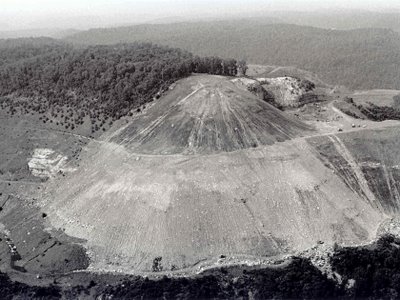
This is a valley fill. You see the leveled area to the right; well, all the waste from that leveling is being dumped in the big mound to the left. Imagine what happens to this sheer sided, naked pile when mountain downpours occur. What happens is massive, devastating mudslides, and immediate flooding of the communities below. Selenium is a major byproduct, and severe fish deformities are showing up where they aren’t killed outright.
With that single wording change in the Clean Water Act, this administration streamlined and gutted the permit process to allow coal companies to very quickly move into a pristine area, blow up the mountaintop, extract the coal from narrow seams, and then dump all the tailings into valleys and streams directly below the flattened mountain. They bury the streams in selenium-laden mine tailings; they poison drinking water and render whole communities uninhabitable. It's the Git-R- Now mentality, brought to us by an administration that is happy to let our children worry about its environmental policies.*
*(thanks to my artist/environmentalist friend Mike DiGiorgio for that particular crystallization).
These sites have to be seen to be believed, and the coal companies make sure no one can see them from the ground, strictly guarding access from below with locked gates. But there are pilots (SouthWings) offering free flyovers for anyone truly wanting to know what's going on in West Virginia, and I'm told that flying over these moonscapes of ruined, bare earth is a devastating experience. Just looking at these pictures is bad enough. To give you some idea of the scale, the dragline (the white crane in the middle of the picture) is 22 stories high. That massive machine takes the place of hundreds of men who would otherwise be working in traditional, underground coal mines. And that machine completely destroys the mountain in taking her coal.
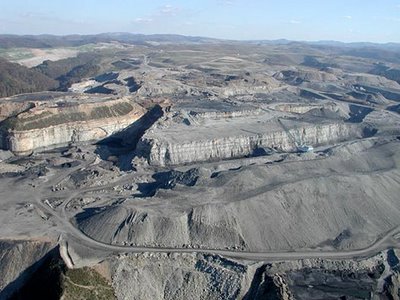
This was Kayford Mountain, 45 minutes from Charleston, about two hours from my home.
Kentucky and Tennessee have been similarly denuded, and for even longer than West Virginia. Much of their landscape is a completely unrecognizable moonscape; it might as well have been paved. The coal companies "reclaim" the stripped, leveled mountains by hydroseeding nonnative grasses onto the baked-hard subsoil that remains. Because all the topsoil is removed, there is no seed bank by which the mesic deciduous forest can replace itself, so the notion of calling this feeble effort "reclamation" would be laughable, were it not so tragic.
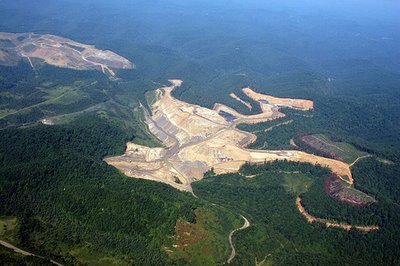
Let's look at a mountaintop that's been removed. We'll start with mesic deciduous forest, holding the slopes from rain and erosion, full of cerulean warblers, as well as American redstarts, Kentucky, worm-eating, black-and-white, and hooded warblers, blue-headed and red-eyed vireos, scarlet tanagers, wood thrushes and pileated woodpeckers, to name just a few. This was Sugartree Road.
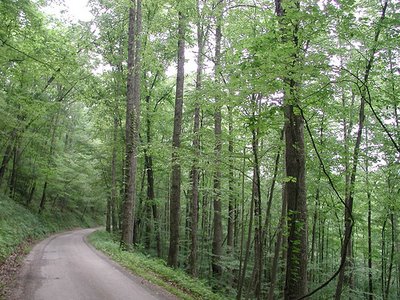
Sugartree Road looks like a place where you'd drive with the windows rolled down, listening to the birdsong, sifting through dozens of species as you watch for wildflowers on the forest floor.
First, the coal companies do a clearcut. They are usually in such a hurry that the valuable timber is bulldozed and buried or burned. There's money to be made here, and speed is of the essence.
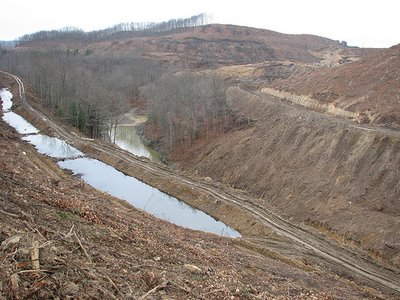
Sugartree Road, after clearcut. Now the mountain is ready to be blown up with dynamite to expose the coal seams. It's gutted and leveled, and the waste is dumped in the valley below.
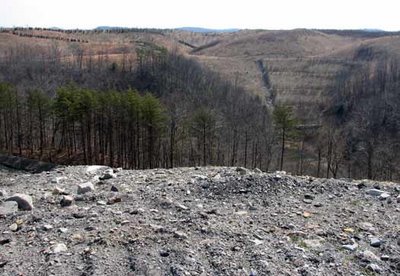
Sugartree after mining.
The rubble in the foreground has been reclaimed. In the middle is a strip that wasn't clearcut or mined. In the background is an older "reclaimed" area. Since there is no seedbank for trees or understory vegetation in the soil, the dominant vegetation is autumn olive, a bird-dispersed noxious exotic that creates a stable shrub community and prevents forest regrowth. It is scrub, and scrub it shall remain.
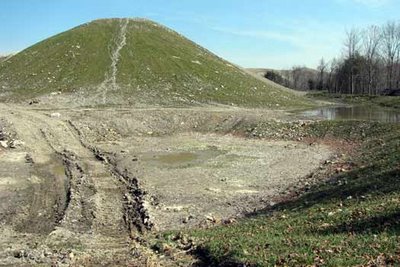
More "reclamation" on Sugar Tree. Good job! We're done here. Coal's out, so's the forest; so are the jobs we promised. We made a bunch of money, and took it all with us. Time to move on to the next mountain.
See anything here for wood thrushes or Kentucky warblers? Or people, for that matter? Ever wonder why the cerulean warbler is headed toward extinction? Does this image help clarify it for you? It certainly helped me understand the larger picture. It's easy for us to point a finger at Colombia, and decry the deforestation that accompanies coca plantations in the highlands where cerulean warblers winter. And so easy to turn a blind eye to what we're allowing to happen on the cerulean warbler's breeding grounds.
Here's one mining project by the Powellton Coal Co., superimposed on a map of greater metropolitan Cleveland. Cleveland's a big city. One project is the size of Cleveland.

And here is a map of Fayette County, the center of warbler diversity in the East, with 23 breeding species of warblers and countless other Neotropical migrants. This is where the New River Birding and Nature Festival is held. It's got the greatest diversity of plant and animal species of any place on the planet, except for tropical rainforest.
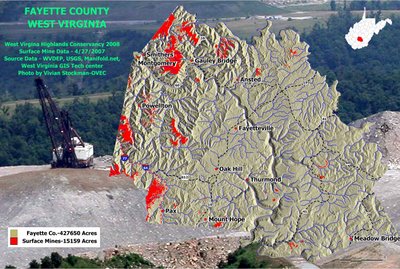
The red areas have been removed by coal companies. These mountains are gone forever.
Would you like to do something about this? Would you like to email your Federal representatives, and ask them to put teeth back into the Clean Water Act that the Bush Administration gutted in order to allow this environmental catastrophe?
Not sure who they are? That's OK. All that matters is that you care enough. Go to
ilovemountains.org where you can find out, by typing in your Zip code, to whom you should direct your polite outrage. I did it. I actually got responses, some automatic, some semi-automatic, and one that said, "You can be sure that I will keep your views in mind should this come to a vote."
I wrote back saying, "Well, thank you. That's very nice. But
how do you plan to vote?" No response to that one.
Sen. Sherrod Brown is the only one of my representatives who wrote back with anything of substance. He is now my hero. He wrote:
"Environmental protection should be among our nation's highest priorities, yet all too often the current administration has acted to weaken existing rules and regulations protecting our environment. Mountaintop removal has serious consequences for our environment--from deforestation to toxic runoff in our streams and rivers. I was disappointed by the Administration's recent rule allowing for the expansion of this troubling practice. We have an obligation to protect and conserve our natural resources and I will keep your thoughts in mind as legislation pertaining to this issue progresses through Congress."
That's what I'm talking about. That's a politician who is willing not just to nod and smile at his constituents, but who is willing to say what he thinks. And he's thinking.
You can learn more and find out how to take more action by visiting the
West Virginia Highlands Conservancy web site.My deepest thanks to Deborah Griffith, writer and activist, for waking me up and providing these pictures and the mind-altering information behind them. Thanks also go to Cindy Ellis of the Highlands Conservancy for her support, and to both of them for fighting. This is not a good thing, this thing that is going on in our mountains.
Labels: Bush administration, Kayford Mountain, mountaintop removal mining, selenium poisoning, Sen. Sherrod Brown, valley fill

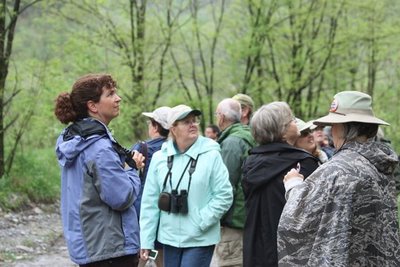 It usually rains at the end of April and beginning of May in West Virginia. When I was corresponding with other members of the nature blogging Flock about the trip, I advised raingear, lots of it. And this turned out to be a very wet festival.
It usually rains at the end of April and beginning of May in West Virginia. When I was corresponding with other members of the nature blogging Flock about the trip, I advised raingear, lots of it. And this turned out to be a very wet festival.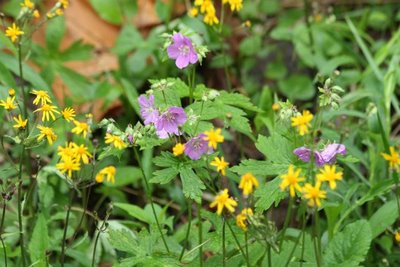 The magnificent large tree, Fraser magnolia, Magnolia fraseri.
The magnificent large tree, Fraser magnolia, Magnolia fraseri.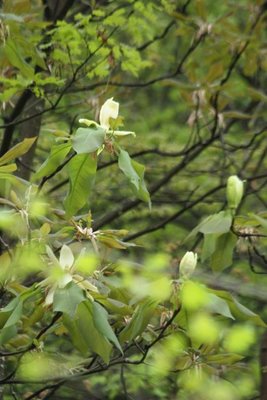 The birds' colors were a bit compromised by the fog and rain. In sunlight, cerulean warblers are sky blue.
The birds' colors were a bit compromised by the fog and rain. In sunlight, cerulean warblers are sky blue.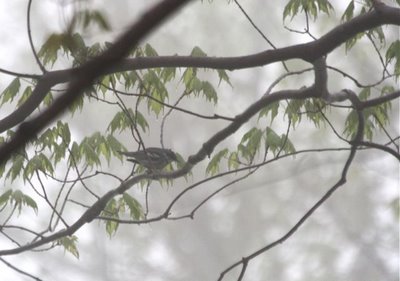
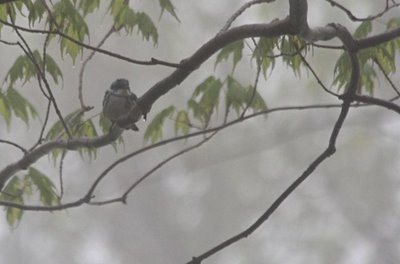
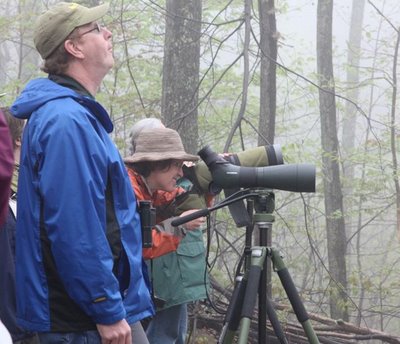 Well, it's shaped like a tanager... Photo by Nina.
Well, it's shaped like a tanager... Photo by Nina.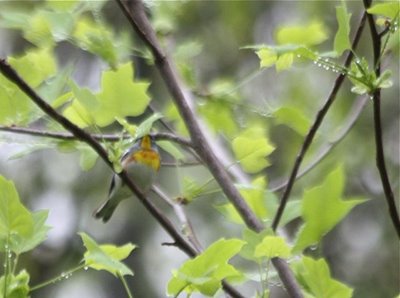 As we walked, I noticed a female eastern towhee as she burst frantically from the ground. She appeared to have been trying to stay still, then lost her nerve. I knew that meant she was on eggs somewhere nearby. I split from the group and walked carefully along the foot of the bank.
As we walked, I noticed a female eastern towhee as she burst frantically from the ground. She appeared to have been trying to stay still, then lost her nerve. I knew that meant she was on eggs somewhere nearby. I split from the group and walked carefully along the foot of the bank.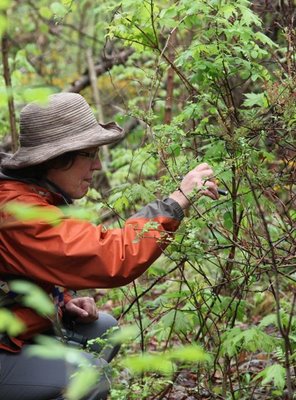 And found the nest, using a laser pointer to show it to the festival participants. Photo by Nina.
And found the nest, using a laser pointer to show it to the festival participants. Photo by Nina.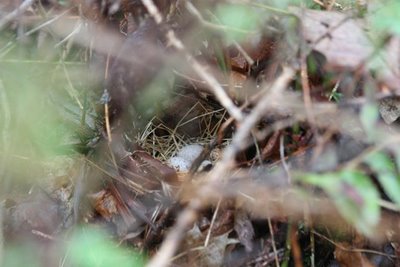
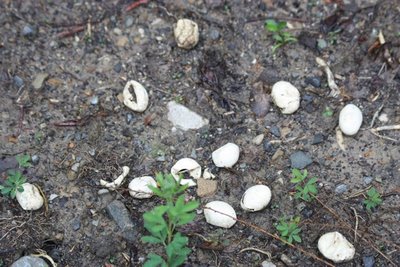
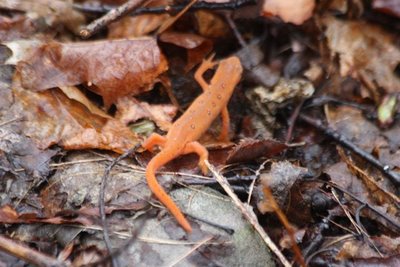 The smallest red eft I'd ever seen enchanted Nina. I'm sure he'll make an appearance on her blog, Nature Remains.
The smallest red eft I'd ever seen enchanted Nina. I'm sure he'll make an appearance on her blog, Nature Remains.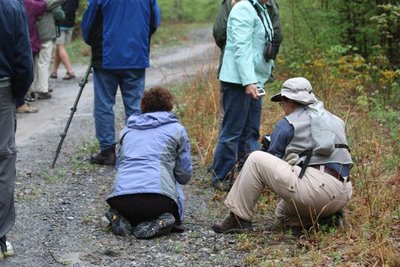 Nina has ferocious focus.
Nina has ferocious focus.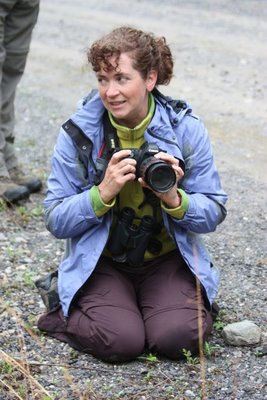 She folded up like a tripod and became one with the newt.
She folded up like a tripod and became one with the newt.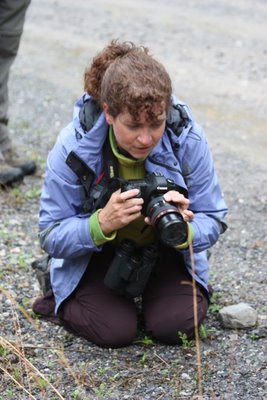
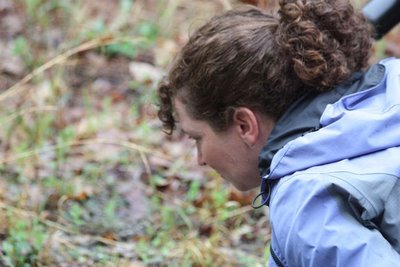
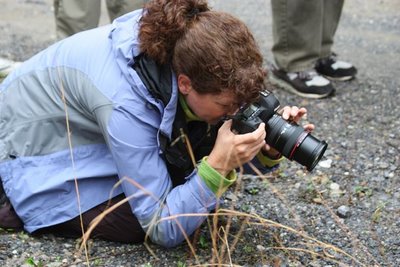 And she became a rock in the road, and captured the eft without touching it.
And she became a rock in the road, and captured the eft without touching it.